Analysis of Suture Force Simulations for Optimal Orientation of Rhomboid Skin Flaps
Wenzhangzhi Guo, Ty Trusty, Joel C. Davies, Vito Forte , Eitan Grinspun , Lueder A. Kahrs
Medical Computer Vision and Robotics Lab, The Wilfred and Joyce Posluns CIGITI @ SickKids, University of Toronto
Abstract
Skin flap procedure is a commonly used technique to close the wound after the resection of a lesion. Careful planning of skin flap procedure is crucial for the most optimal functional and aesthetic outcome. However, currently surgical planning is mostly done based on surgeons’ experience and preferences.
In this paper, we introduce a finite element method (FEM) simulation that is used to make objective recommendations of the most optimal flap orientation. Rhomboid flap is chosen as the main flap type of interest because it is a very versatile flap. We focus on evaluating suture forces required to close a wound as large tension around it could lead to complications. We model the skin as an anisotropic material where we use a single direction to represent the course of relaxed skin tension lines (RSTLs).
We conduct a thorough search by rotating the rhomboid flap in small increments (1°-10°) and find the orientation that minimizes the suture force. We repeat the setup with different material properties and the recommendation is compared with textbook knowledge. Our simulation is validated with minimal error in comparison with other existing simulations. Our simulation shows to minimize suture force, the existing textbook knowledge recommendation needs to be further rotated by 15°-20°.
The FEM Simulation
We built a FEM simulation to model various skin flap procedures on a 2D circular patch based on the open-source library Bartels. We assume the lesion is located in the center of the patch and there is a pre-defined RSTLs direction.
Initial Setup
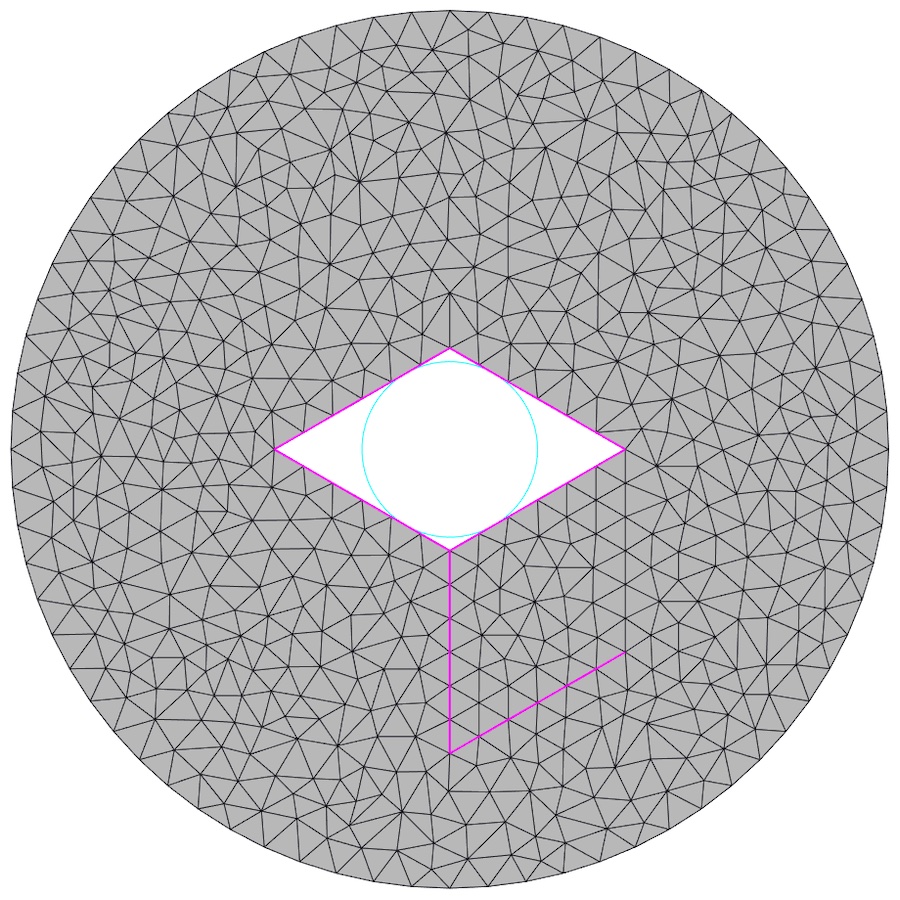
Start of Simulation
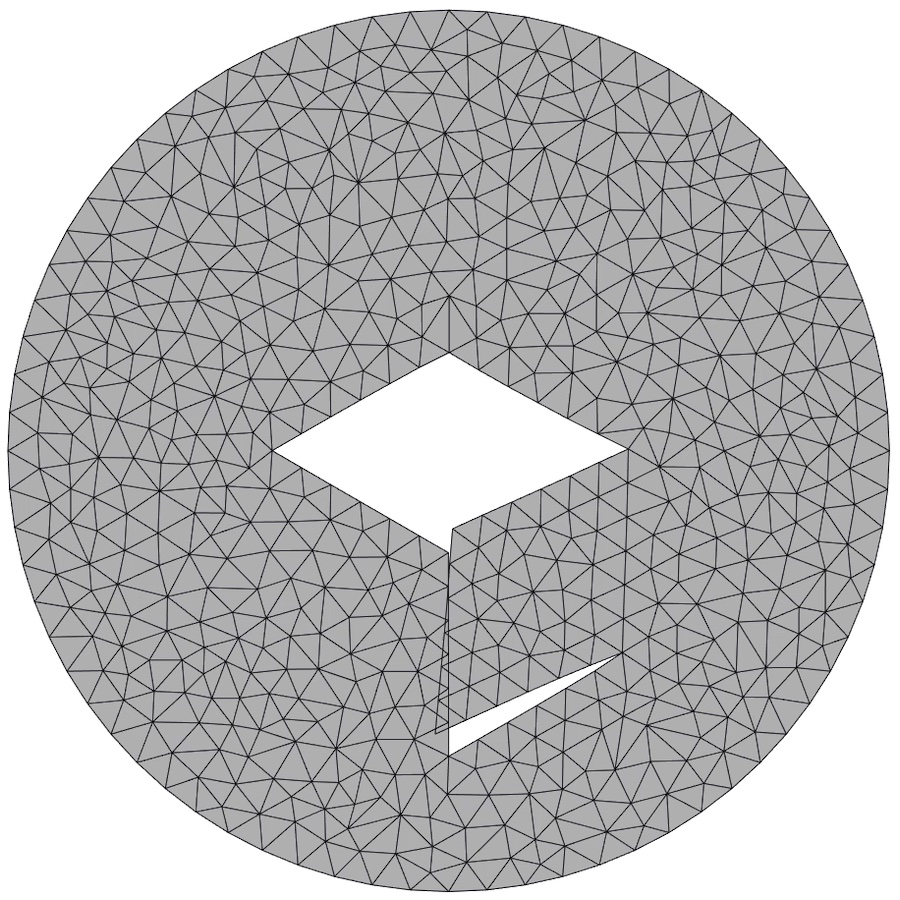
Sutures on One Edge
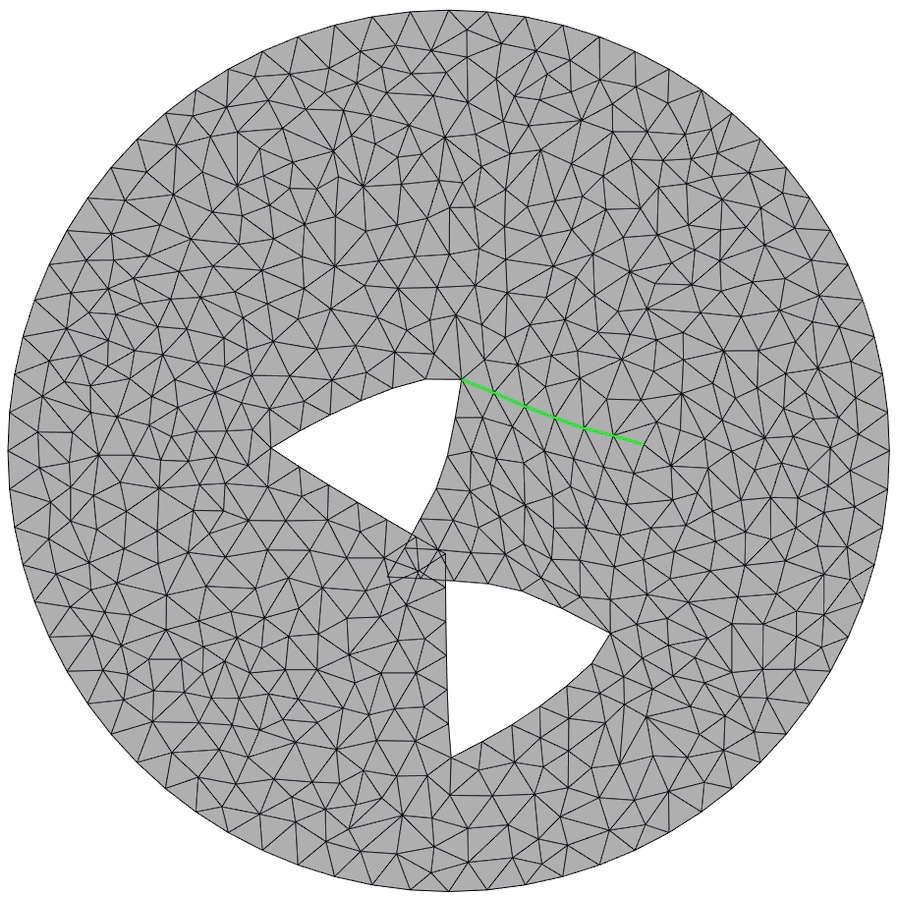
Final Suture Line
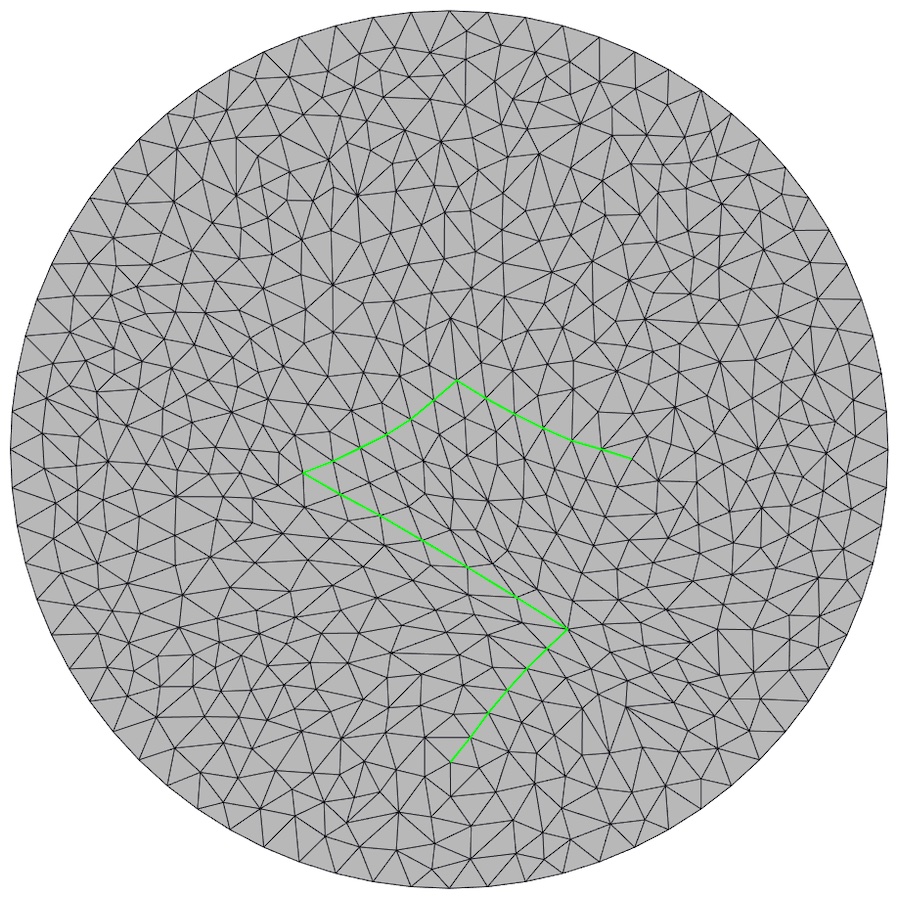
Suture Force
According to medical textbooks, excess force along the suture line can cause wound dehiscence and complications. Thus, the flap rotation angle that requires the lowest suture force should be the optimal orientation. To find suture force for each setup, we first wait for the FEM simulation to stabilize. Then we compute the suture force between each pair of suture points and find the maximum suture force (i.e. we are minimizing the maximum suture force). This process was done for the case where we complete all sutures at once (multi-sutures) or one suture at a time (single-suture).
Multi-sutures
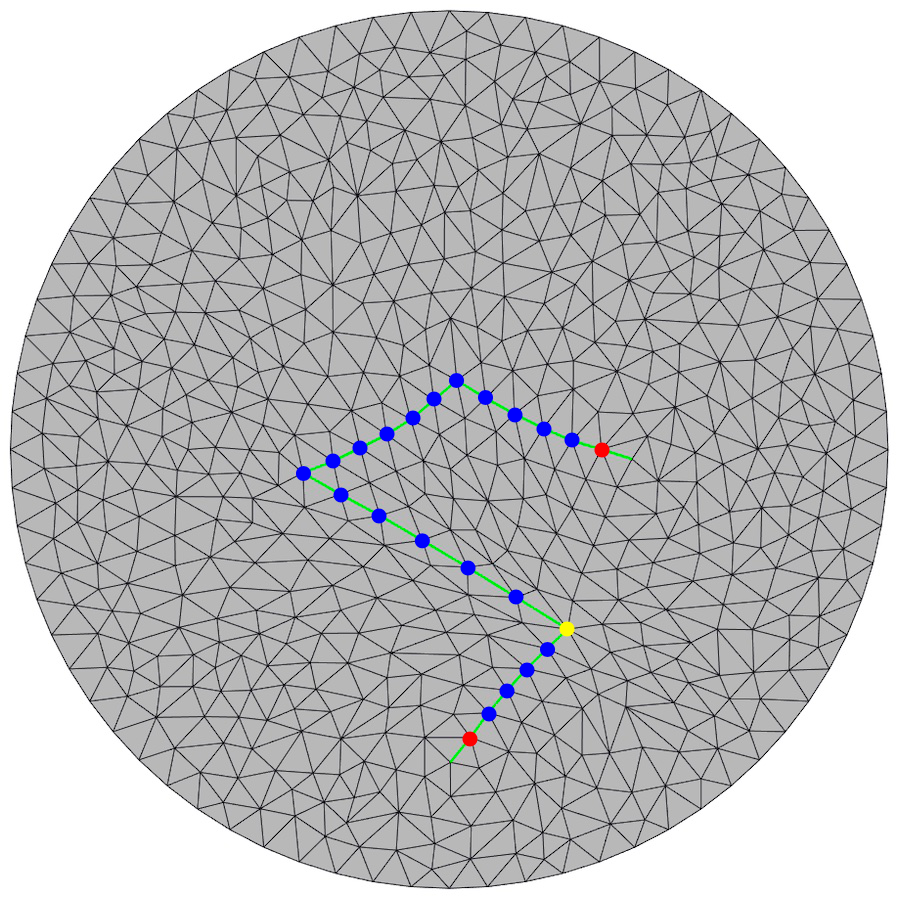
Single-suture
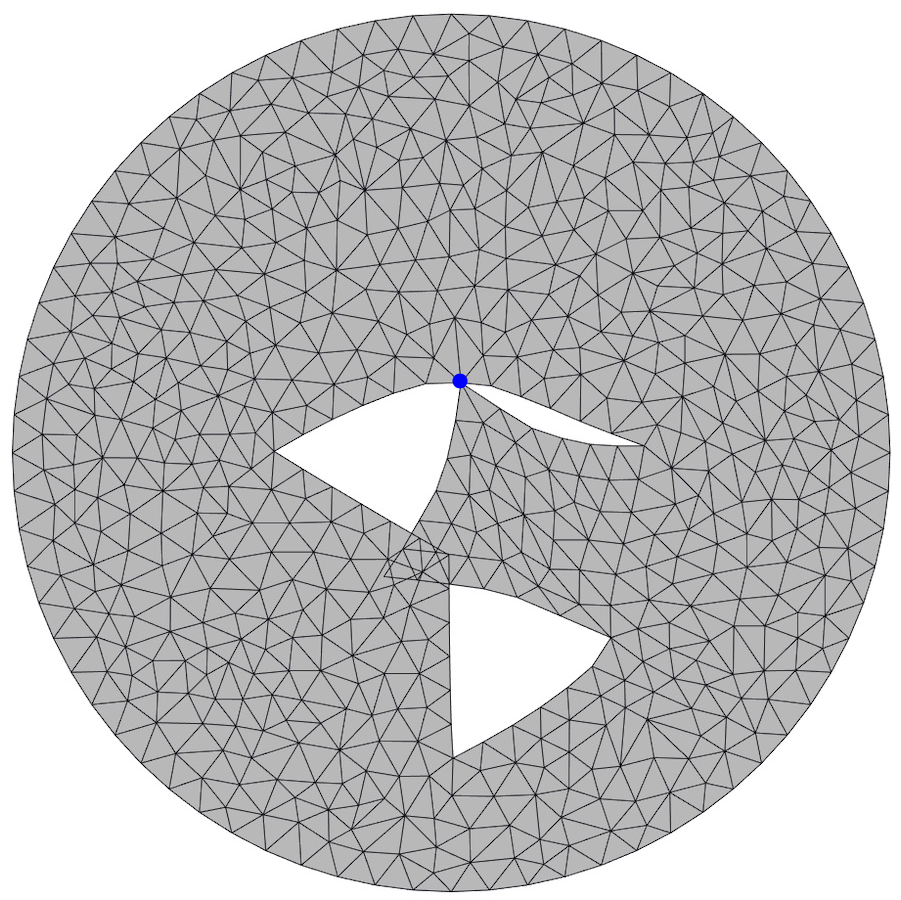
Sample Force Distribution
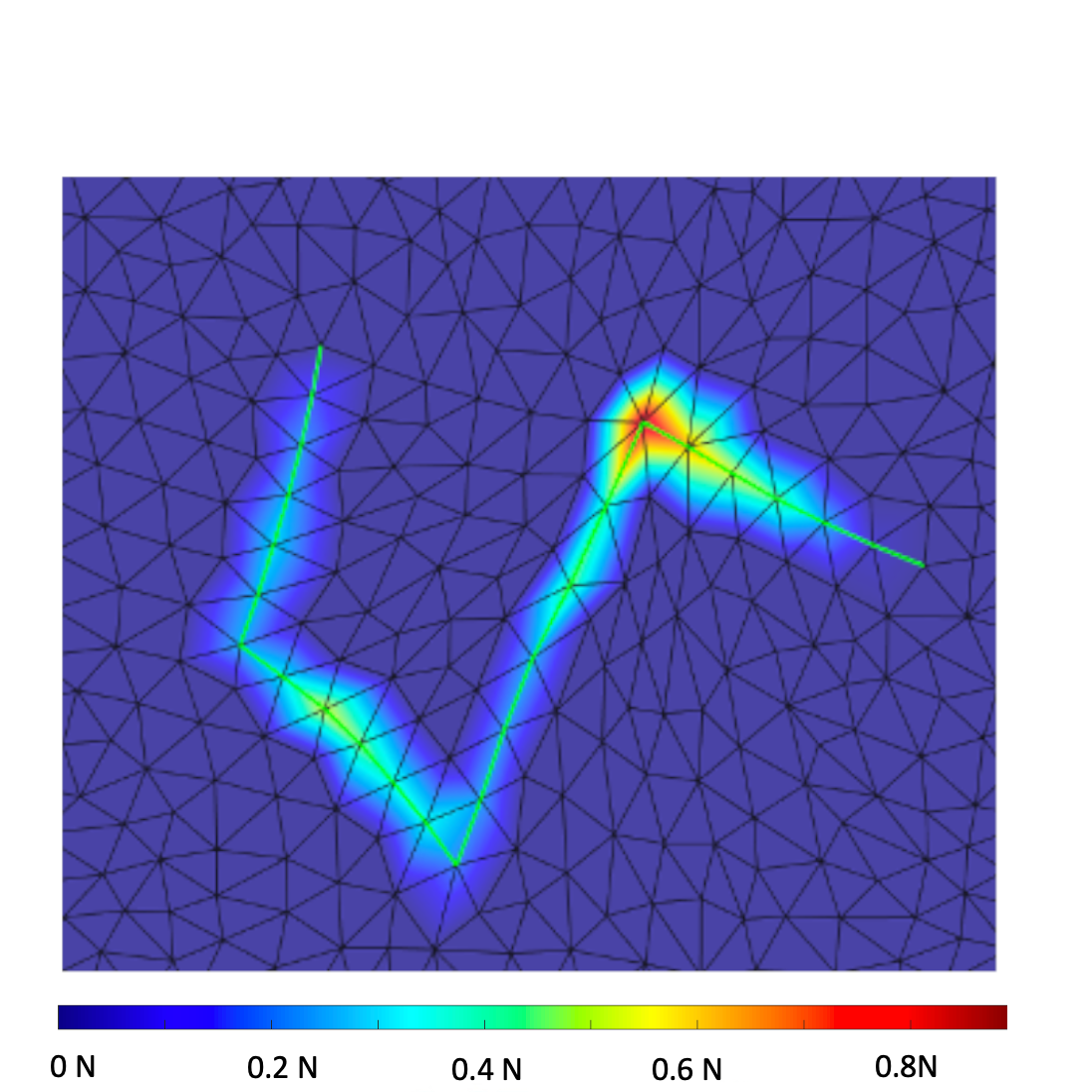
Suture Line Comparison
To validate our FEM simulation, we compare it against the UWG simulator. We first perform a skin flap procedure in the UWG simulator and take a screenshot of the result. We then overlay our simulation result and compute the Hausdorff distance between them (our result is in green where the UWG simulator result is in purple).
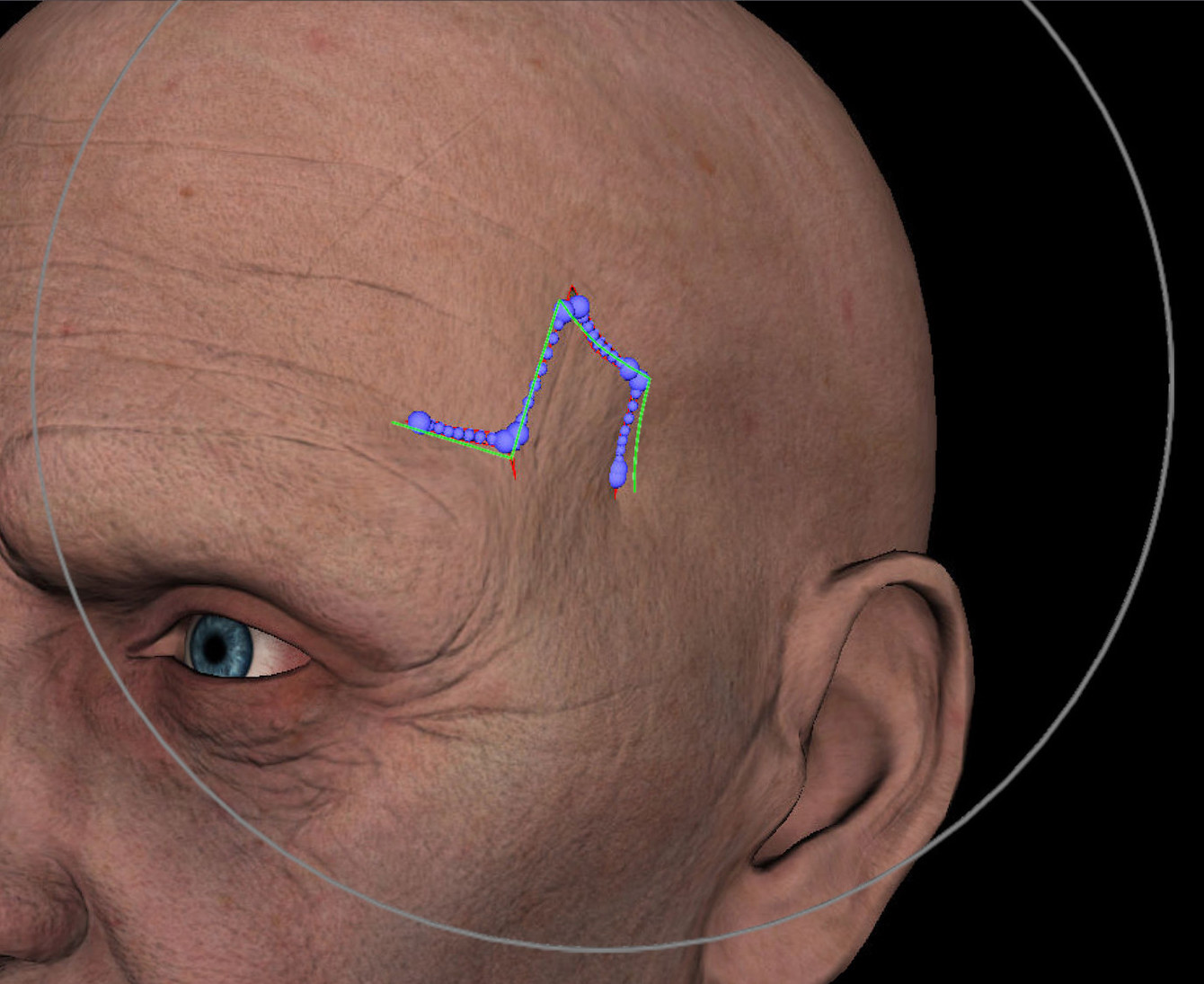
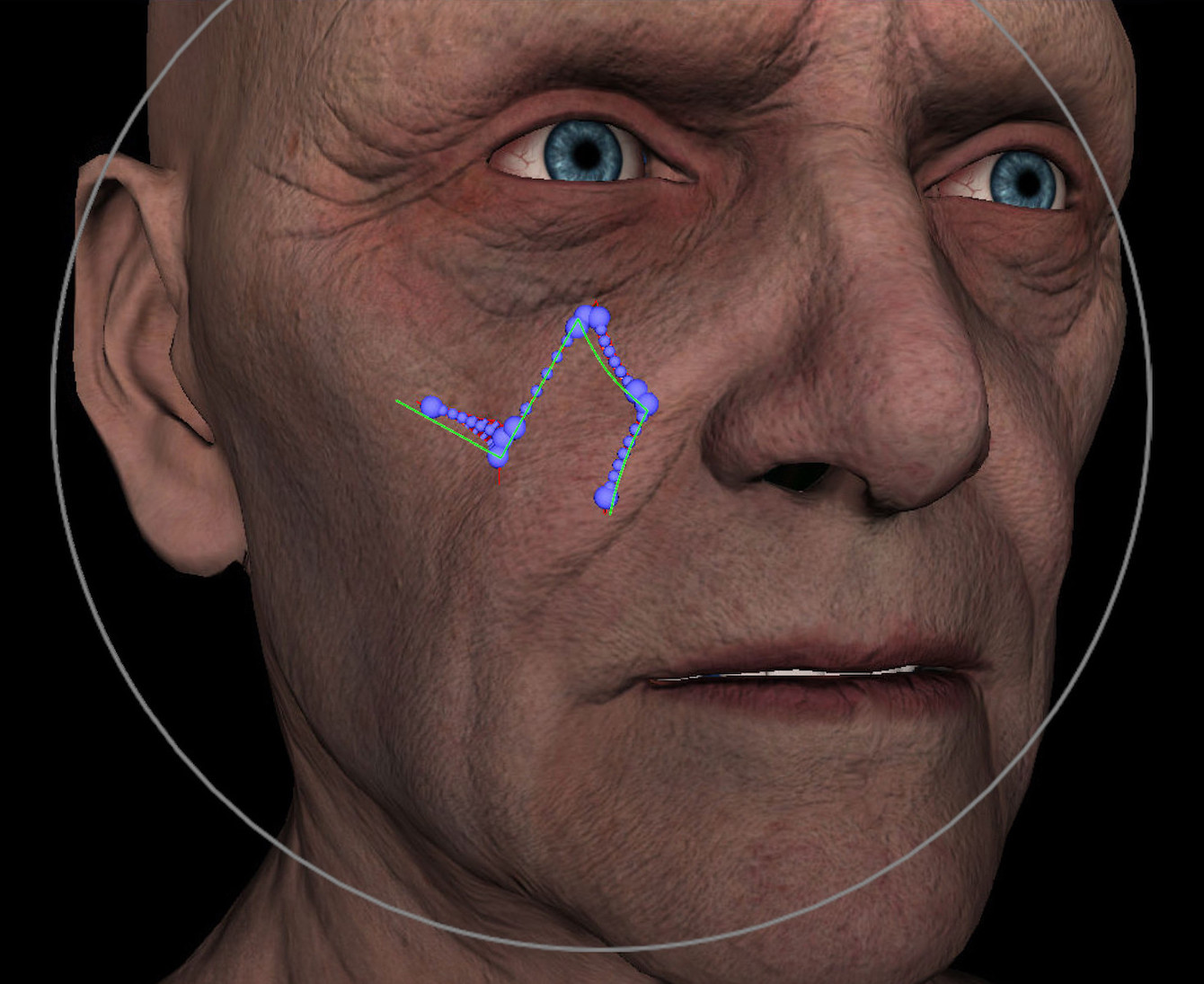
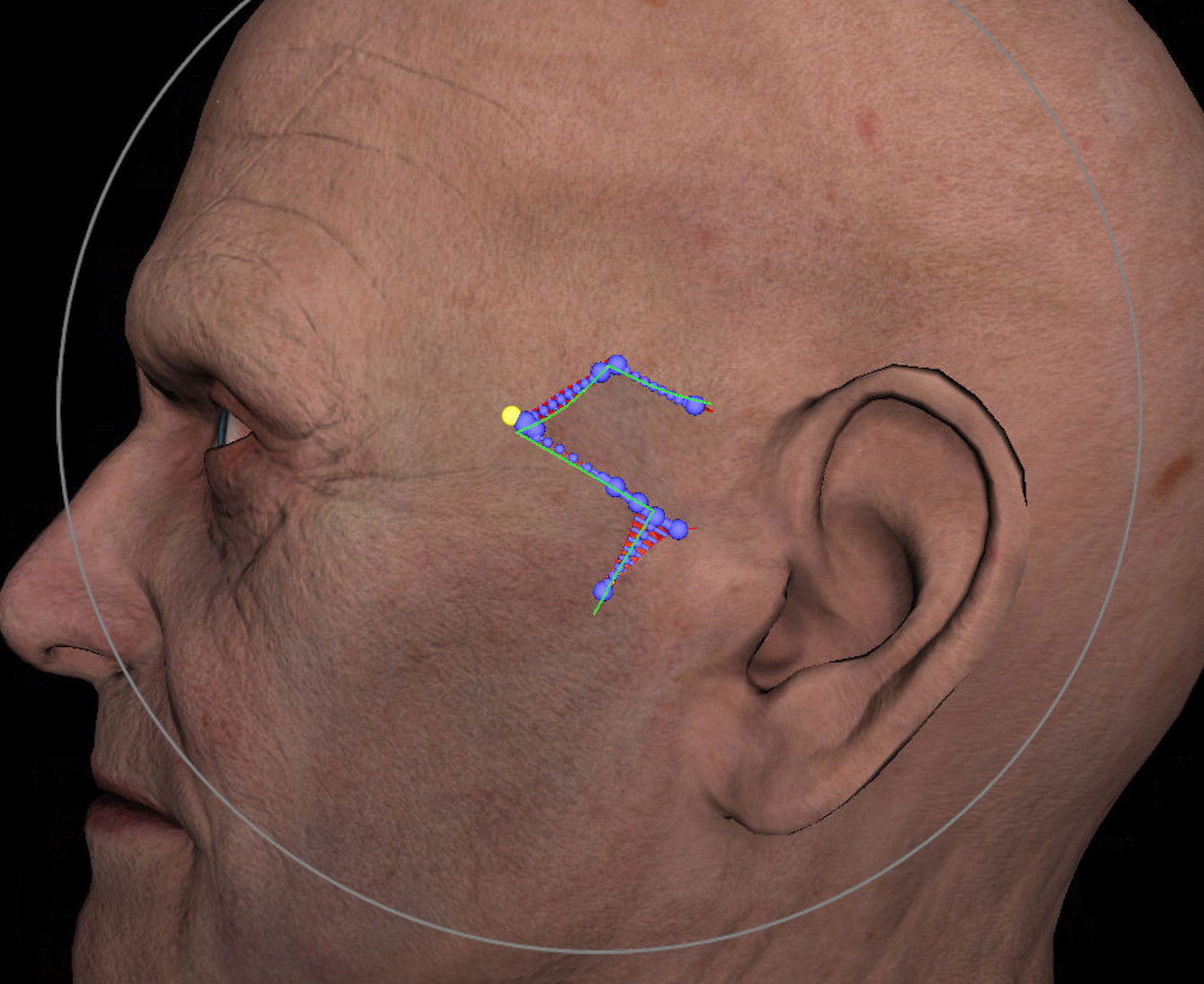
Textbook Knowledge Comparison
For Limberg flap (rhomboid flap with equal edge lengths and a top angle of 120°), there is a textbook description that aligns it based on lines of maximum skin extensibility (LME), which are perpendicular to RSTLs. For our setting, this alignment occurs at 120° and 300°. The result of multi-sutures and single-suture setting with different material properties is shown below.
Textbook Description
Multi-sutures Result
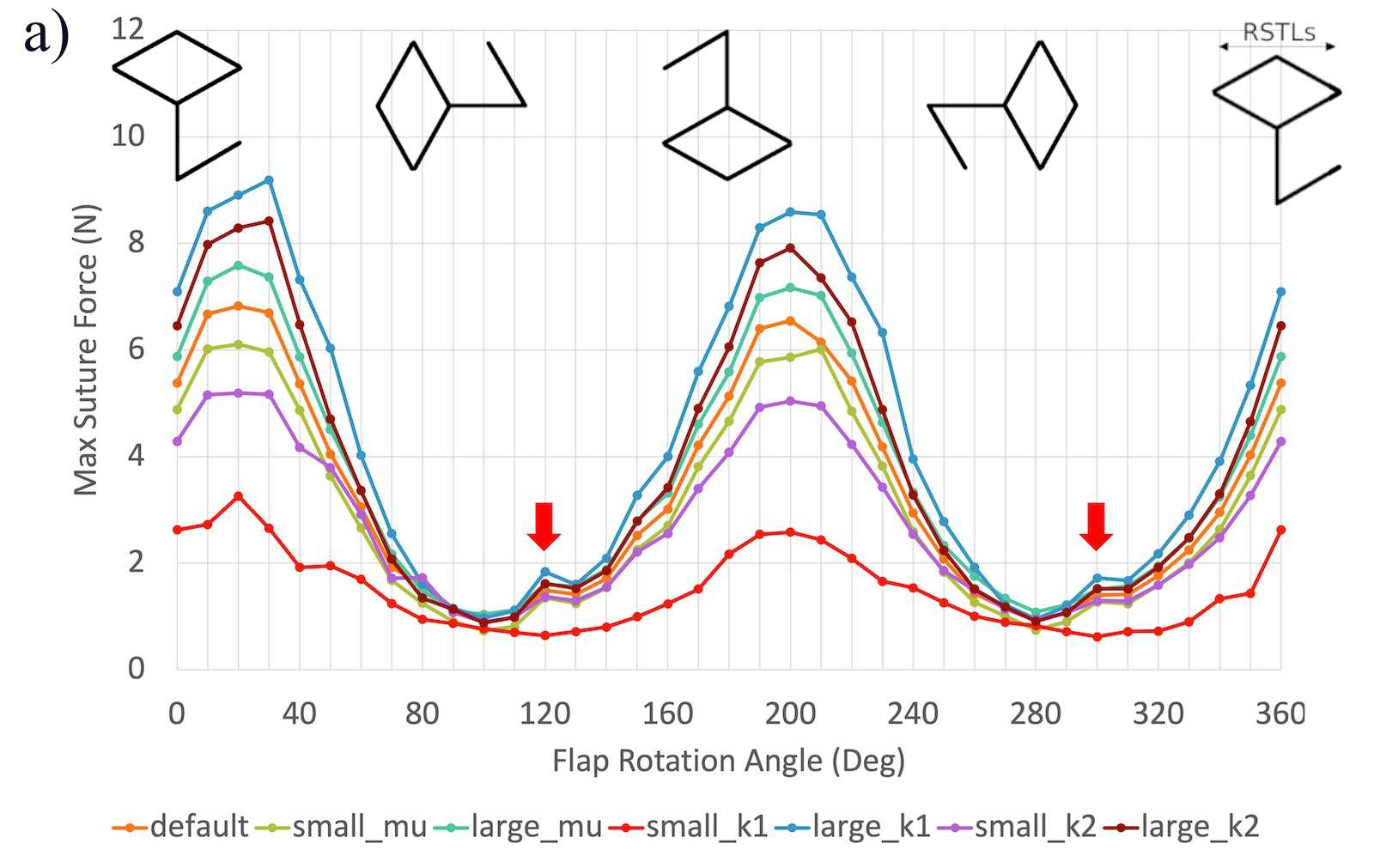
Single-suture Result
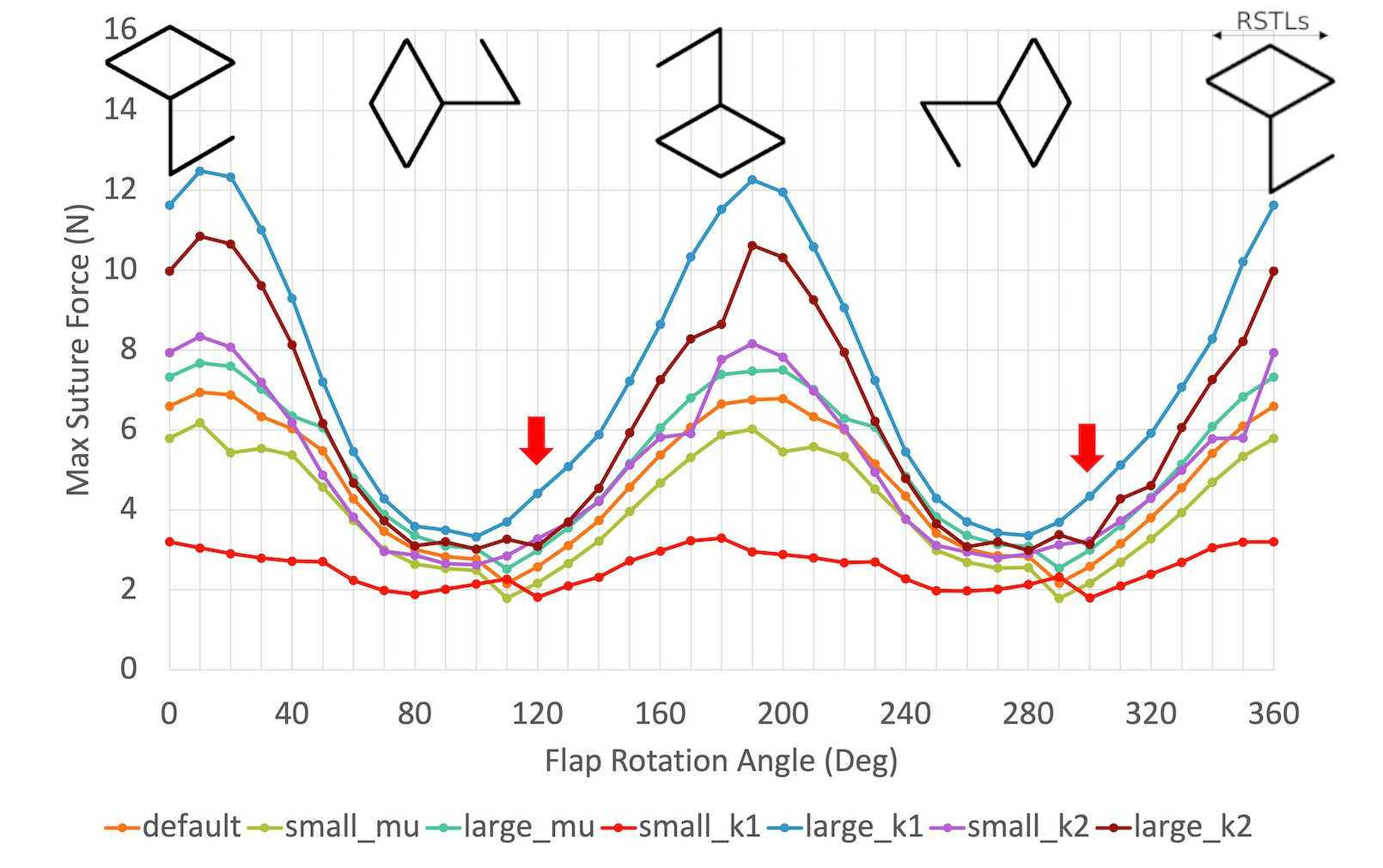
Textbook Comparison Summary
Through minimizing suture forces, we found that the optimal orientation occurred at 99°/281° and 105°/284° for multi-sutures and single-suture settings, respectively.

Conclusion and Future Works
Our experiment suggests that the minimal suture force occurs at a configuration that is close to textbook knowledge recommendation, but we found that rhomboid flaps have to be rotated further 15° to 20° away from the LMEs. This could be because that the textbook knowledge is trying to optimize a different goal or has taken other factors into account. Further investigation and comparison with synthetic models/clinical cases is needed to show clinical significance of our result. It would also be interesting to repeat the same set of experiments for other skin flap types
Database
We have captured simulation videos of rhomboid flaps with various material properties and orientations along with vertex positions of the final suture line. These videos can be found on Kaggle.
BibTeX Citation
@InProceedings{guo2023suturerhomboid, author="Guo, Wenzhangzhi and Trusty, Ty and Davies, Joel C. and Forte, Vito and Grinspun, Eitan and Kahrs, Lueder A.", title="Analysis of Suture Force Simulations for Optimal Orientation of Rhomboid Skin Flaps", booktitle="Medical Image Computing and Computer Assisted Intervention -- MICCAI 2023", year="2023", publisher="Springer Nature Switzerland",}
